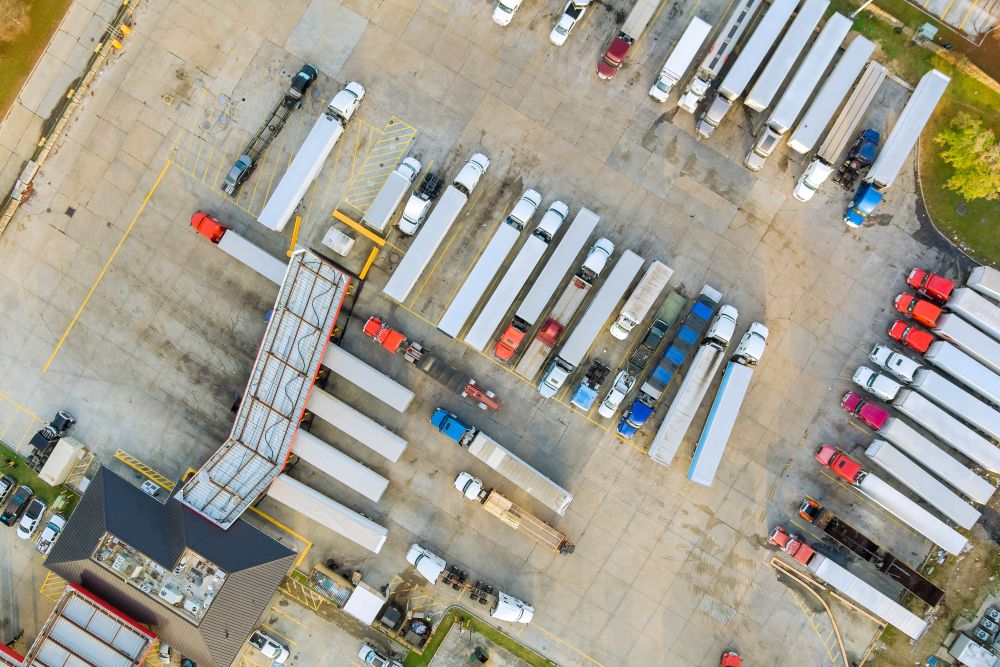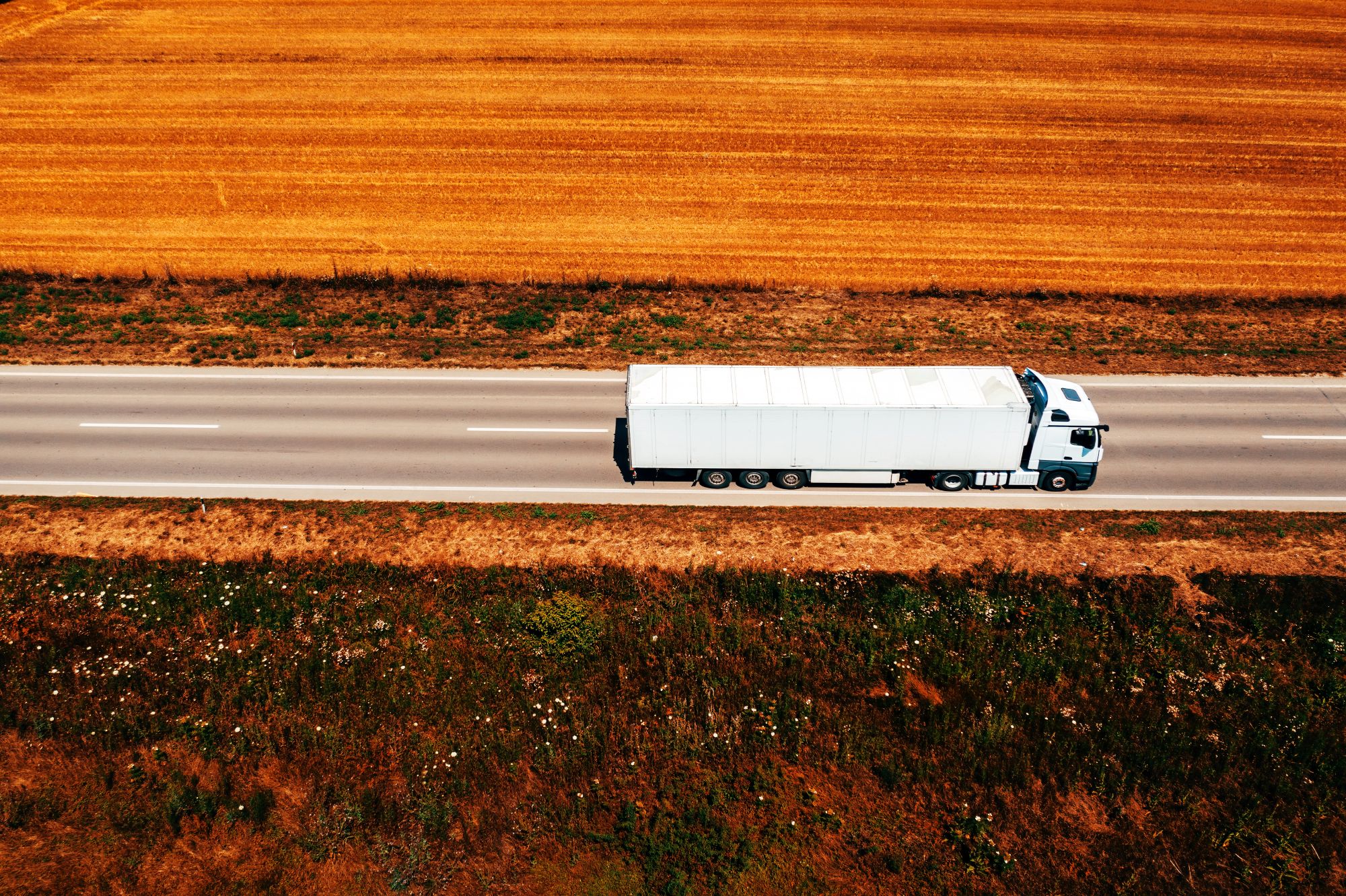
Miranda Blake
Herausforderungen und Lösungen im modernen Verkehrsmanagement
Erstellt: 16.12.2024
•
Aktualisiert: 16.12.2024
Modernes Transportmanagement ist ein strategischer Ansatz für die Planung, Organisation und Kontrolle des effizienten und effektiven Transports von Waren und Materialien vom Ausgangspunkt zum Zielort. Es beinhaltet die Nutzung von Technologie und datengesteuerten Erkenntnissen, um Transportprozesse zu optimieren, Kosten zu senken und die Kundenzufriedenheit zu erhöhen.
In diesem Blog gehen wir auf die wichtigsten Herausforderungen und Lösungen in diesem Bereich ein.
Zentrale Herausforderungen
Eines der drängendsten Probleme, mit denen sich Fuhrparks auseinandersetzen müssen, ist die Verwaltung der Kraftstoffkosten. Diese machen einen beträchtlichen Teil der Betriebsausgaben aus, und ihre Volatilität kann die Budgetierungsprozesse und die Gesamtrentabilität beeinträchtigen. Die Unvorhersehbarkeit der Kraftstoffpreise zieht sich wie ein roter Faden durch die gesamte Lieferkette und zwingt die Unternehmen zu schwierigen Entscheidungen über Kostenübernahme oder Preiserhöhungen, was ihre Wettbewerbsfähigkeit beeinträchtigen kann. Vorausschauende Unternehmen setzen jedoch Strategien ein, um die damit verbundenen Risiken zu mindern:
● Abschluss von Kraftstoff-Absicherungskontrakten, um die Preise für einen bestimmten Zeitraum festzuschreiben und so die Ausgaben zu stabilisieren
● Investitionen in moderne, kraftstoffsparende Fahrzeuge, um den Verbrauch und die Gesamtkosten zu senken
● Erkundung alternativer Kraftstoffquellen, wie Biodiesel oder komprimiertes Erdgas, um als Puffer gegen die Schwankungen der traditionellen Kraftstoffpreise zu wirken
Eine der Lösungen - SNAP Fuel - ermöglicht ein nahtloses Kraftstoffmanagement:
● Flottenbetreiber können auf detaillierte Ausgabenberichte zugreifen, die Kostentransparenz bieten und ihnen helfen, Trends und verbesserungswürdige Bereiche zu erkennen.
● Durch die Partnerschaft mit Certas Energy können die Nutzer ermäßigte Kraftstofftarife nutzen und so ihre Ausgaben weiter senken.
Verkehrsstau
Ein weiteres Problem ist der Verkehr. Mit dem Anwachsen der Stadtbevölkerung nimmt die Belastung der bestehenden Infrastruktur zu, was zu Problemen in der gesamten Logistikkette führt. Verspätungen sind an der Tagesordnung, der Kraftstoffverbrauch schießt in die Höhe und die Betriebskosten steigen, während die Kundenzufriedenheit aufgrund der langen Lieferzeiten sinkt.
Es gibt verschiedene Taktiken, um den negativen Auswirkungen dieser Entwicklung entgegenzuwirken:
Der Einsatz fortschrittlicher Routenoptimierungs- Software kann dazu beitragen, die effizientesten Wege zu ermitteln und so die Fahrzeit und den Kraftstoffverbrauch zu reduzieren.
● Die Integration von Echtzeit-Verkehrsdaten in den Betrieb kann dynamische Routenanpassungen auf der Grundlage der aktuellen Bedingungen ermöglichen.
● Die Entwicklung von maßgeschneiderten Stadtlogistikplänen kann es Unternehmen ermöglichen, stadtspezifische Herausforderungen zu meistern, wie z. B. Zonen mit eingeschränktem Zugang und Hauptverkehrszeiten.
Unterbrechungen der Lieferkette
Von Naturkatastrophen über geopolitische Ereignisse bis hin zu Arbeitskräftemangel sind Unterbrechungen ein weiteres Thema, mit dem Flotten konfrontiert sind - sie führen zu Verspätungen, erhöhten Kosten und vermindertem Serviceniveau und stellen die Widerstandsfähigkeit von Transportmanagementsystemen in Frage.
Um solche Unterbrechungen zu bewältigen, können Organisationen verschiedene Strategien anwenden:
● Diversifizierung: Die Beschaffung von Materialien und Dienstleistungen von mehreren Lieferanten kann die Abhängigkeit von einem einzelnen Lieferanten verringern und die Risiken mindern.
● Risikobewertungen: Regelmäßig durchgeführte Risikobewertungen können dazu beitragen, Schwachstellen innerhalb der Lieferkette zu ermitteln und die Notfallplanung zu unterstützen.
● Live-Überwachung: Der Einsatz von Technologien, die einen Echtzeit-Einblick in die Lieferkette ermöglichen, kann die Reaktionsfähigkeit verbessern und die Entscheidungsfindung beschleunigen.

Innovative Lösungen
Die fortschreitende Entwicklung und Integration von Technologien verspricht, die Zukunft des Verkehrsmanagements neu zu gestalten, langjährige Probleme zu lösen und neue Möglichkeiten für Wachstum und Innovation zu eröffnen.
● Telematik: Fahrzeugverfolgungssysteme liefern Echtzeitdaten zu Standort, Routenoptimierung und Fahrerverhalten und ermöglichen so fundiertere Entscheidungen.
● IoT-Geräte: Diese können den Zustand des Fahrzeugs, den Kraftstoffverbrauch und den Zustand der Ladung überwachen und so für optimale Leistung und Sicherheit sorgen.
● KI und maschinelles Lernen: Dadurch können Sie prädiktive Analysen und Bedarfsprognosen ermöglichen und die Routenoptimierung und Bestandsverwaltung verbessern.
● Blockchain: Die Einführung dieser Technologie kann die Transparenz, Sicherheit und Rückverfolgbarkeit der Lieferkette verbessern und das Vertrauen zwischen den Beteiligten fördern.
Fahrerbindung und Ausbildung
Der Fahrermangel ist eine weitere Herausforderung für das Transportmanagement, die das Verkehrsministerium mit einer Konsultation über Möglichkeiten zu seiner Behebung zu lösen versucht. Wir haben die Lkw-Fahrer aufgefordert, ihre Meinung zu diesem Vorschlag auf der [SNAP-Facebook-Seite] (https://www.facebook.com/snapaccount) zu äußern. Viele äußerten sich nicht zu der Regelung, aber 72,5 % stellten den Begriff "Fahrermangel" in Frage und bezeichneten ihn als Panikmache. Stattdessen nannten sie [mehrere Gründe, warum erfahrene Lkw-Fahrer die Branche verlassen] (https://snapacc.com/newsroom/hgv-drivers-challenge-the-term-driver-shortage/).
Daher ist es nach wie vor von großer Bedeutung, qualifizierte Fahrer zu gewinnen und zu halten. Die Regierung hat [mehrere Maßnahmen eingeleitet] (https://snapacc.com/newsroom/addressing-the-hgv-driver-shortage-in-the-uk-in-20242025/), aber Flottenmanager und Lkw-Fahrer können auch selbst Maßnahmen ergreifen:
● Wettbewerbsfähige Vergütung und Sozialleistungen: Ein attraktives Angebot kann dazu beitragen, Spitzenkräfte auf einem umkämpften Arbeitsmarkt zu gewinnen.
● Flexible Arbeitsregelungen: Diese können die Arbeitszufriedenheit erhöhen und die Fluktuationsrate senken.
● Fortbildung und Kompetenzentwicklung: Durch Investitionen in laufende Programme können die Fahrer mit den Fähigkeiten ausgestattet werden, die sie benötigen, um ihre Aufgaben hervorragend zu erfüllen und sich an neue Technologien anzupassen.
Eine weitere Möglichkeit, Fahrer zu halten, besteht darin, ihnen die Arbeit so einfach wie möglich zu machen - und dazu gehört auch die Bezahlung von Parkgebühren und Wäsche. Zum Glück gibt es SNAP.
Unterstützung von SNAP erhalten
Wenn Sie mehr über unsere Dienstleistungen erfahren möchten und darüber, wie sie das Transportmanagement unterstützen können, rufen Sie uns unter +44 (0)1603 777242 an.



